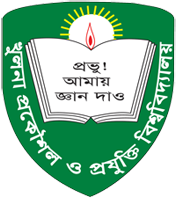Computational Intelligence Research Group
Department of Computer Science and Engineering
Khulna University of Engineering & Technology (KUET)
Khulna -9203, Bangladesh.
Website : www.kuet.ac.bd/cse/compint/
Department of Computer Science and Engineering
Khulna University of Engineering & Technology (KUET)
Khulna -9203, Bangladesh.
Website : www.kuet.ac.bd/cse/compint/
Research
Computational Methods for Machine Interaction with Bangla
Bangla is an important language with a rich heritage; 21st February is declared as the International Mother Language day by UNESCO to respect the language martyrs for the language in Bangladesh in the year of 1952. It is the first language of Bangladesh, West Bengal and Tripura (two states in India) and is the fifth most spoken language, spoken by about 245 million people around the world. Bangla character set is also used for some Indian languages (e.g., Manipuri). Although Bangla is a major spoken language, a systematic and scientific efforts for the computerization of this language is not adequate with respect to English and other languages. In the age of information and communication technology (ICT), significant efforts to enhance Bangla facility through ICT and enrich Bangla using ICT are very important. In the computerization process, Language Corpus, Optical Character Recognition (OCR) Text-to-Speech (TTS) and Speech-to-Text(STT) developments are the important tasks. CIRG is working on these topics.
Ensemble Learning
In statistics and machine learning, ensemble methods use multiple models to obtain better predictive performance than could be obtained from any of the constituent models. An ensemble is itself a supervised learning algorithm, because it can be trained and then used to make predictions. Empirically, ensembles tend to yield better results when there is a significant diversity among the models. Many ensemble methods, therefore, seek to promote diversity among the models (e.g., neural networks, decision trees) and combine them. We are interested to develop ensemble methods for better performance.
Artificial Neural Network and Fuzzy System
Modeled after human brain, artificial neural networks have been proven as efficient tools in the computational intelligence. We conduct researches on automatic architecture learning of neural networks from data, which is essential for their better generalization performance. We are also involved in doing research for their extension to processing complex-valued data that arise in frequency domain representation of signals, radar and fMRI imaging, and communication systems.
Another aspect of human brain is that of dealing with imprecise information and the linguistic attribute based reasoning process that can be modeled with fuzzy system. Neuro-fuzzy approach combines the human-like reasoning style of fuzzy systems with the learning and connectionist structure of neural networks. We are doing research on developing neuro-fuzzy methods for control problems.
Swarm Intelligence and Bio-Inspired Computing Techniques
Natural systems are a source of inspiration for computer algorithms designed to solve optimization problems. Swarm Intelligence (SI) is a recent family of bio-inspired techniques based on the social or collective behavior of groups such as ants, bees, etc., insects which have very limited capacities as individuals, but form groups to carry out complex tasks. SI provides a basis for exploration of a collective (distributed) behavior of a group of agents without centralized control. Although the swarming phenomenon is largely observed in biological organisms such as an ant colony or a flock of birds, it is recently being used to simulate complex dynamic systems. We are particularly interested in developing novel optimization algorithms from biological/natural mimicry and apply in real-life optimization tasks.
Evolutionary Computation
Evolutionary Computation (EC) is subfield of computational intelligence that indicates any population-based metaheuristic optimization algorithm that uses mechanisms inspired by biological evolution, such as reproduction, mutation and recombination. An EC algorithm begins with potential solution models, then iteratively applies algorithms to find the fittest models from the set to serve as inputs to the next iteration, ultimately leading to a model that best represents the data. We are particularly interested in developing novel EC optimization algorithms and apply in real-life optimization tasks.
Pattern Recognition
Pattern recognition by machine is one of the ultimate goals in artificial intelligence. While the humans can do this task effortlessly, it is a challenging task to the machines. We are particularly interested in recognition problems in the context of Bangla speech and text processing, developing hybrid models, and investigate theoretical aspects.
Unsupervised Feature Learning
Feature representation is an essential and primary step in applying machine learning algorithms to data. Researchers have spent tremendous efforts for long time in hand-engineering the input feature representation. Unsupervised feature learning attempts automating this process to learn a good representation of the input from unlabeled data. Our goal is to develop new methods and deal with current issues in various unsupervised feature learning approaches.
